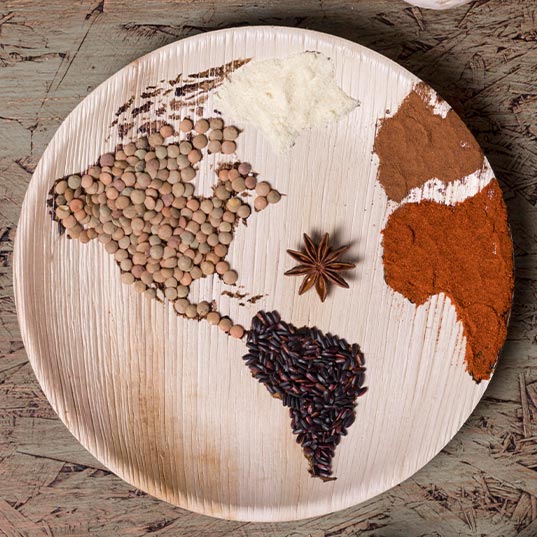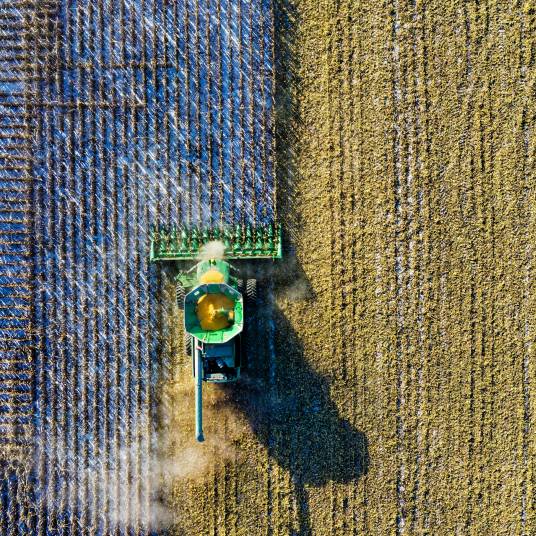At the start of the 20th Century, the global population was 1.65 billion. In the 1970s -half a century ago - it was 3.7 billion. Today, it’s estimated that we number around 7.75 billion. What do these figures mean? That we are more, and we need more food and, as such, more land needs to be farmed worldwide.
Earth is facing two parallel realities. As big conurbations expand to incorporate the increase of inhabitants in cities, a large part of nature is becoming part of the huge allotment needed to supply us with food.
Since 2003, the cultivated surface area of the planet is estimated to have grown by 9%. A percentage that translates into a million square kilometers, equivalent to the size of Egypt. But what does that mean? And why is it bad news for biodiversity?
What will I learn from this article?
- The amount of farmed land worldwide is increasing
- Which places experiencing the biggest growth?
- How does cultivated surface area affect climate change worldwide
Agricultural land is growing at a cost to nature
 The increasing global population is inevitably provoking the expansion and intensification of world agriculture. There are more mouths to feed. But this situation also signifies a threat to the functioning of ecosystems and the protection of biodiversity.
The increasing global population is inevitably provoking the expansion and intensification of world agriculture. There are more mouths to feed. But this situation also signifies a threat to the functioning of ecosystems and the protection of biodiversity.
The global increase in cultivated land area has accelerated over the past two decades, with the rate of annual expansion almost doubling - mainly in Africa. Half of the new farmland has replaced natural vegetation, in direct conflict with the UN’s 2030 Agenda for Sustainable Development.
The growing amount of land needed to produce soya, rice and wheat, for example, is a concern for a very simple reason: land is taken from natural spaces, like forests and jungles, which play an important role in absorbing CO2.
The United Nations Sustainable Development Goals (SDGs) for 2030 require the increase in agricultural production to be balanced by maintaining the services we receive from the ecosystems. The path set out by the SDGs is the only viable one for guaranteeing food security, protecting biodiversity and freshwater, and mitigating climate change.
"Land is taken from natural spaces such as forests and jungles, which play a key role in absorbing CO2”
This is the conclusion of a study based on detailed new maps showing the global transformation of farmland and analyzing its evolution from 2003 to 2019, developed from images gathered from Landsat satellites. The study results were published in Nature Food magazine and reveal whether the land cultivated has been more or less productive over time.
In the hands of farmers, economists, conservation groups and institutions, such information could indeed bring about the balance we need between food production and the preservation of ecosystems.
Where is farmland increasing most in the world?
 With 530,000 square kilometers of new farmland, Africa is the continent that has added the most. A scenario that in part owes itself to significant demographic growth. And the tendency will continue over the next decades. The African population is expected to approximately double by 2050, adding 1.2 billion to the 1.3 billion who live there today.
With 530,000 square kilometers of new farmland, Africa is the continent that has added the most. A scenario that in part owes itself to significant demographic growth. And the tendency will continue over the next decades. The African population is expected to approximately double by 2050, adding 1.2 billion to the 1.3 billion who live there today.
It is followed by South America, with 370,000 km2 of newly cultivated land. South-West Asia and Australia have also experienced increases, although nowhere near as much. North America, Europe and South-East Asia are relatively unchanged.
By country, the United States had the biggest area of farmed land in 2019, followed closely by India and China. The biggest growth in cultivated land was found in Brazil, with an increase of 77% on 2003. Going in the opposite direction was Russia, where researchers noticed that a lot of farmland had been abandoned since the 1990s, following the dissolution of the USSR.
The flip side: where there’s less farmland due to climate change
Saudi Arabia has experienced a general abandonment of farmland for different reasons. One is the scarcity of underground water, which has led the authorities to eliminate subsidies to wheat producers and to limit this commodity’s export.
The country suffers from the effects of desertification, which brings with it social and economic consequences according to a World Bank report, “Sand and Dust Storms in the Middle East and North Africa (MENA) Region”.
As we have seen in previous articles, agriculture is suffering because of global warming. Lower crop outputs will impact on all continents as a result of the combination of increasing temperatures, more frequent droughts and extreme climate.
Farmers worldwide face many challenges if they are to produce more food and raw materials for a growing population and develop more efficient production methods. All this while agricultural labor is declining and the sector is struggling to adapt to climate change.
Sources: